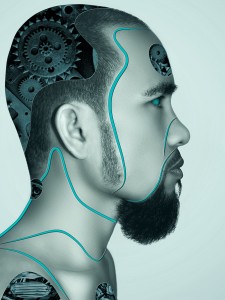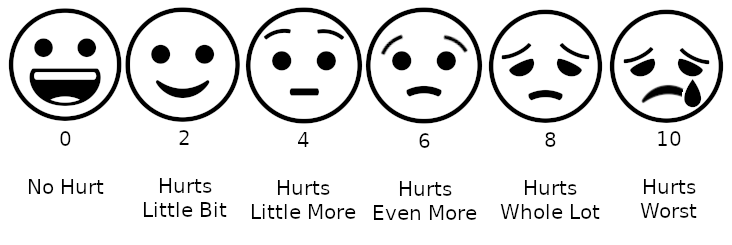Chapter 8. The Sociology of the Body: Health and Medicine
19.1 The Sociology of the Body and Health

Whereas human bodies have not changed radically since the evolution of Homo sapiens 200,000 years ago, humans’ relationship to their bodies has. Due to this change over the last 150 years — in biomedical knowledge, nutrition, hygiene, or sanitation, for example — people, on average, are healthier, taller, and live longer than their ancestors lived. In turn, these changes have had direct consequences for social organization.
Chapter 13. Aging and the Elderly discussed how the phenomenon of the aging population has forced governments, institutions, and individuals to rethink everything from pension plans, health care provisions, and mandatory retirement ages, to the bias towards youth in popular culture and marketing. As a political constituency, seniors are both significant in numbers and more engaged than young people. They are also healthier and live longer on average than previous generations of seniors. They can press the government to shift resources away from young people’s concerns to meet their own interests: for example, away from funding education to investing in medical research.
In his science fiction novel Holy Fire (1996), Bruce Sterling extrapolates from this phenomenon to imagine a future gerontocracy where seniors hold all the wealth and power, as well as the resources to invest in radical medical procedures, which extend their lives and health indefinitely. Young people are excluded from meaningful participation in society, and youth culture is no longer celebrated, but seen as reckless and irresponsible. The primary interest of the gerontocrats is their continued health, so their lifestyle involves a strict regimen of exercise, diet, avoidance of intoxicants, and aversion to risk. Sterling raises the question of a future epoch of post-humanity, i.e., a period in which the mortality that defined the human condition for millennia has effectively been eliminated through the technologies of life preservation.
Is this the postnatural future of humanity? How malleable is the human body? To what degree can it be redesigned to suit human purposes? In what way is the human body a sociological phenomenon as well as a physiological phenomenon?
Medical Sociology and the Social Construction of Health
The sociology of health encompasses social epidemiology, disease, mental health, disability, and medicalization. The principal insight of sociology is that health and illness cannot be simply regarded as biological or medical phenomena. They are perceived, organized, and acted on in a political, economic, cultural, and institutional context. Moreover, the way people relate to them is in constant evolution. As medical science learns to control existing diseases, new diseases develop. Similarly, as societies become global, the ways in which disease spreads evolve with them.
According to the World Health Organization (WHO), health “is a state of complete physical, mental and social well-being, and not merely the absence of disease or infirmity” (WHO, 2014). What does “health” mean to people? How does the WHO definition relate to contemporary issues of health? Are there too many people taking medications in Canadian society? Is there reason to be skeptical about people claiming they are “addicted” to gambling or “addicted” to sex? Are there historical diseases or conditions now considered within a spectrum of normality? Or are there conditions that have recently become known as a disease, but were previously considered evidence of laziness, moral weakness, or other character flaws? How do people decide whether children should receive vaccinations? These are questions examined in the sociology of health.
If sociology is the systematic study of human behaviour in society, medical sociology is the systematic study of how humans manage issues of health and illness, disease and disorders, and health care for both the sick and the healthy. Medical sociologists study the physical, mental, and social components of health and illness. Major topics for medical sociologists include the doctor-patient relationship, the structure and socioeconomics of health care, and how culture impacts attitudes toward disease and wellness.
The social construction of health is a major research topic within medical sociology. At first glance, the concept of a social construction of health may not make sense. After all, if disease is a measurable, physiological problem, then there can be no question of socially constructing disease, right? In fact, it is not that simple. The idea of the social construction of health emphasizes the socio-cultural aspects of the discipline’s approach to physical, objectively definable phenomena. Sociologists Conrad and Barker (2010) offer a comprehensive framework for understanding the major findings of the last 50 years of development in this concept. Their summary categorizes the findings in the field under three subheadings: the cultural meaning of illness, the social construction of the illness experience, and the social construction of medical knowledge.
The Cultural Meaning of Illness
Many medical sociologists contend that illnesses have both a biological and experiential component, and that these components exist independently of each other. Culture, not biology, dictates which illnesses are stigmatized, which are considered disabilities, and which are deemed contestable (meaning some medical professionals may find the existence of this ailment questionable) as opposed to definitive (illnesses that are unquestionably recognized in the medical profession) (Conrad and Barker, 2010).
For instance, sociologist Erving Goffman (1963) described how social stigmas hinder individuals from fully integrating into society. A stigma in general is defined by a “mark” of difference that defines a socially undesirable characteristic. In other words, stigma works to define a person by a single attribute that makes them seem less than fully human and therefore subject to discriminatory practices, often unthinkingly. In meeting a stigmatized person, people construct a stigma theory that explains their inferiority and provides an account of the difference, threat, or danger they represent.
The stigmatization of illness often has the greatest effect on the patient and the kind of care they receive. Many contend that contemporary society and even health care institutions discriminate against certain diseases — like mental disorders, substance use disorder (addiction), AIDS, venereal diseases, and skin disorders (Sartorius, 2007). Facilities for these diseases may be sub-par; they may be segregated from other health care areas or relegated to a poorer environment. This is a product of the stigma associated with the condition rather than the biology of the condition itself. As a result, the stigma may keep people from seeking help for their illness, making it worse than it needs to be.
Contested illnesses are those that are questioned or found questionable by some medical professionals. Disorders like fibromyalgia or chronic fatigue syndrome may be treated as any other illness or dismissed as “in the patients’ head”, depending on the opinion of the medical professional. This dynamic can affect how a patient seeks treatment and what kind of treatment they receive.
The Social Construction of the Illness Experience
The idea of the social construction of the illness experience is based on the concept of reality as a social construction. In this perspective, there is no objective reality independent of people’s own perceptions of it. The social construction of the illness experience deals with such issues as the way some patients control the way they reveal their disease, and the lifestyle adaptations patients develop to cope with their illnesses.

In terms of constructing the illness experience, culture, and individual personality both play a significant role. For some people, a long-term illness can have the effect of making their world smaller, more defined by the illness than anything else. For others, illness can be a chance for discovery, for re-imaging a new self (Conrad and Barker, 2010). Culture plays a huge role in how an individual experiences illness. Widespread diseases like AIDS or breast cancer have specific cultural markers that have changed over the years and that govern how individuals — and society — view them.
Today, many institutions of wellness acknowledge the degree to which individual perceptions shape the nature of health and illness. Regarding physical activity, for instance, the Public Health Agency of Canada recommends that individuals use a standard level of exertion to assess their physical activity. This rating of perceived exertion (RPE) gives a more complete view of an individual’s actual exertion level, since heart rate or pulse measurements may be affected by medication or other issues (CSEP, N.d.). Similarly, many medical professionals use a comparable scale for perceived pain to help determine pain management strategies.
The Social Construction of Medical Knowledge
Conrad and Barker (2010) show how medical knowledge is socially constructed; that is, it can both reflect and reproduce inequalities in gender, class, race, and ethnicity. They use the example of the social construction of women’s health and how medical knowledge has changed significantly in the course of a few generations. For instance, in the early 20th century, pregnant women were discouraged from driving or dancing for fear of harming the unborn child, much as they are discouraged from smoking or drinking alcohol today. Medical knowledge is used to reinforce ideas “about women’s ‘proper’ (i.e., subordinate) place in society, as well as moral assumptions about women’s sexuality and femininity more generally” (Conrad and barker, 2010).
Medicalization (discussed below in more detail) is also an aspect of the social construction of medical knowledge. Medicalization “occurs when human problems or experiences become defined as medical problems, usually in terms of illnesses, diseases, or syndromes” (Conrad and Barker, 2010). Again, the medicalization of Pre-Menstrual Syndrome (PMS) or menopause in women is an example in which natural reproductive functions of women are treated as disorders or medical conditions in need of medication. On the other hand, the renaming of male “impotence” as “erectile dysfunction” was part of medicalized branding exercise that coincided with the introduction of Pfizer’s pharmaceutical product Viagra. Originally targeted to older men, Pfizer quickly began promoting Viagra to a much larger audience as a means of enhancing male’s (or male partner’s) sexual experience, effectively medicalizing sexuality itself.
A social constructionist approach to medical knowledge provides a critical basis to examine how certain problems come to be defined in medical terms and how this translates into public policy.
Image Descriptions
Figure 19.5 long description: The Wong-Baker pain rating scale goes from 0 to 10. 0 is no pain, 2 is mild, 4 is discomforting, 6 is distressing, 8 is horrible and 10 is excruciating or the worst pain imaginable. The scale also used cartoon faces to illustrate the different levels of pain. 0 is smiling, 2 is a small smile, 4 is a straight face, 6 is a slightly sad face, 8 is a big sad face, 10 is a bigger sad face that is crying. [Return to Figure 19.5]
Media Attributions
- Figure 19.2 Me..Cyborg, by Donald Jusa, via Flickr, is used under a CC BY 2.0 licence.
- Figure 19.3 Andry tree by Nicolas Andry, via Wikimedia Commons, is in the public domain. Original from Orthopedics or the art of preventing and correcting deformities of the body in children, 1741, engraver unknown.
- Figure 19.4 Item D-04783 – Chinese Lepers At D’Arcy Island, circa 1890s from the BC Archives (Archives code(s): HP067703; 193501-001), via Royal BC Museum, is in the public domain.
- Figure 19.5 Emoji representation of the Wong–Baker Faces Pain Rating Scale for assessment of pain in children by Lord Belbury, via Wikimedia Commons, is used under a CC BY-SA 4.0 licence.

